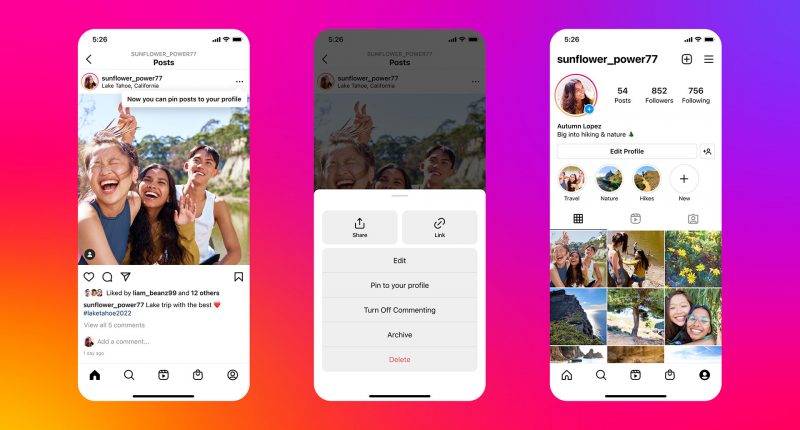If you are one of the 1.3 billion+ people who have Instagram, then you might have wanted to further customize your profile and “save” important or your favorite posts by pinning them.
This is something that Instagram knows, and has been working on since April. And now, it is finally bringing to its users the feature they have wanted for a long time – the ability to pin posts to the top of their Instagram profile.
The company has confirmed that it has walked the same way as TikTok and Twitter by rolling out the ability for users to pin up to three posts (including Reels) to the top of their profile grid after being in the works for two months.
“You like it? You pin it. You can now choose up to three posts or Reels to pin to the top of your profile,” Instagram announced in a tweet. It said that this will give a greater range of flexibility to users to express themselves on their profiles. You do not need to wait to access this feature, as Instagram is launching it globally starting today.
“Your profile is your space, so we’re looking for more ways to give you control over that experience,” Instagram head Adam Mosseri said in a video that was posted to his social media channels.
You must be wondering how you can pin the posts (or Reels). Navigate to the one you want to pin, and click on the three dots present in the top right corner. Then, several options will appear, including turning off commenting, and editing, archiving or deleting the post. You need to click on “Pin to your profile,” and once you have done so, the post (or Reel) will appear at the top of your profile grid.
Not only will this feature let Instagram users maximize the appeal of your Instagram profile display for visitors, but this will also let them highlight their favorite posts so that they no longer get lost further down the photo grid.
Pinning favorites to the top of the profile grid is not a new feature – Twitter (Pin to your profile) and TikTok (Pinned videos) have shown us this, and Instagram already lets users pin Stories to their profile. It was reverse-engineer Alessandro Paluzzi who first spotted the feature back at the start of the year, and Instagram announced that it was testing it a few months later, along with other options for the customization of your profile display.
The Tech Portal is published by Blue Box Media Private Limited. Our investors have no influence over our reporting. Read our full Ownership and Funding Disclosure →






